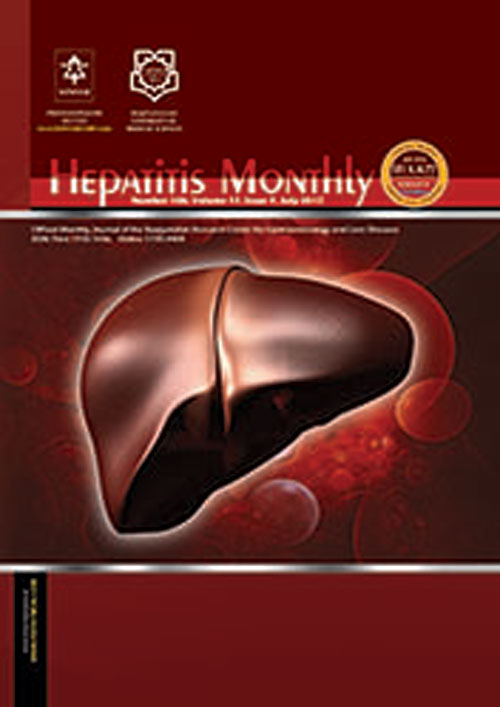Fereshteh Ghiasvand , Simin Dashti, Khavidaki , Bobak Moazzami *, Amirpasha Ebrahimi , Zeynab Malekzadeh , Zinat Mohammadpour , Leila Jahan , Mohsen Nasiri, Toosi , Zahra Ahmadinejad
Page 1
Background
Procalcitonin (PCT) has been shown as a reliable diagnostic biomarker for identifying sepsis and bacterial infection.
Objectives
The present study examined the sensitivity and specificity of PCT evaluation in the diagnosis of infectious diseases after liver transplantation.
Methods
The present prospective cohort study was conducted on postoperative liver transplant (LT) patients in the liver transplant ward of Imam Khomeini Hospital Complex affiliated to Tehran University of Medical Sciences between January 2014 and March 2015. Serum PCT levels were evaluated before transplantation and one, two, and six or seven days post-operation by semi-quantitative kits with a 30 seconds response.
Results
A total number of 28 LT patients were enrolled in this study. The mean patients’ ages were 48.6 ± 10.9 (range 26 - 66) years old. Serum PCT levels in all patients were < 0.5 ng/mL prior to the operation. At first and second days post-operation, PCT levels were more than 2 ng/mL in all patients and decreased to 0.5 ng/mL after 6 or 7 days in 23 patients. Serum PCT level of higher than 5 ng/mL on the first and second days post-surgery with a sensitivity of 77.8% and specificity of 79% had the most accuracy for the infection diagnosis. The PCT level more than 5 ng/mL in the sixth and seventh days had a 100% positive predictive value in the infection prediction.
Conclusions
Serial evaluations of serum PCT after liver transplantation had good sensitivity and specificity to predict postoperative infection. Increased serum PCT level within the first days after transplantation and/or failure to decrease after one week, predicts infectious complications and undesirable outcome.
Keywords:
Procalcitonin, Liver Transplantation, Infection, Complication



